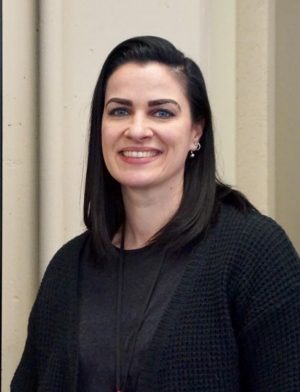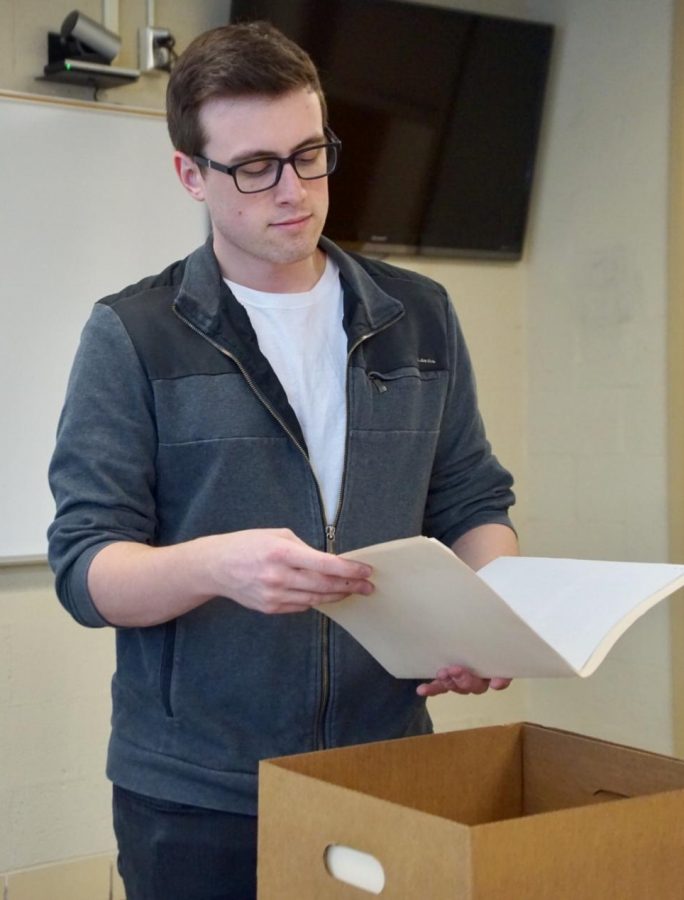“I want to give them back their name”
The Historical Human Remains Projects seeks to identify Minnesota’s long-unidentified desceased.
February 18, 2019
May, 2011. Faribault, Minnesota. An excavation of a Victorian-era privy, done with the intent of unearthing antique bottles produced something far more significant.
Jeffrey Springer, a specialist in such “bottle hunting,” encountered a skeleton nestled among glassware in the privy on a centuries-old farm. While eight years have passed since the discovery, the identity of the skeleton is still a mystery, and H453, a label assigned by the state, is today the only name they have to call their own.
However, a team of researchers based at Hamline and funded by a state Legacy Amendment grant, seeks to change that. Minnesota’s Historical Human Remains Project endeavors to match H453 and many other unidentified deceased with their true names and stories at long last.
For over three decades, since Professor Emeritus of Anthropology Barb O’Connell served as assistant to the state archaeologist, Hamline has served as the repository for all unidentified historic remains under the state archaeologist’s jurisdiction, as long as they are of non-American Indian origin, and unrelated to a crime scene. ‘Historic,’ in this case, refers to remains which are more than fifty years old. However, anthropology professor Brian Hoffman says that prior to 2017, “no [state] money had ever been put towards any kind of resolution for what happened with the remains.”
In 2016, Amanda Gronhovd took a Human Osteology class at Hamline to prepare for her newfound role as Minnesota’s state archaeologist.
There, she became aware of “the sheer number of folks stored in drawers who were my responsibility.”
Gronhovd and her professor, forensic anthropologist Sue Myster sought to secure state funding for a project to identify the skeletons, many of which had been analyzed by osteology students. The proposal for this Historical Human Remains Project was approved and a research team assembled. In addition to Gronhovd and Myster, the crew consists of historian Jeremy Jackson, archaeology records specialist Kyle Knapp and lab manager Desiree Haggberg, the latter two of whom are Hamline alumni. Hoffman manages budgeting for the project.

Osteology supervisor Desiree Haggberg posing for the camera.
Despite the camaraderie of the team and the expertise each researcher brings to the table, the analysis and identification of human remains is not the speedy cakewalk it is sometimes portrayed to be by television. Haggberg and Knapp acknowledged that while Fox’s Bones (2005-2017) helped to destigmatize the practice of archaeology in the public’s eyes, the timeline the show gives for solving a case is not accurate. One cannot expect to deduce defining characteristics of a set of remains, such as sex and cause of death, just by briefly looking at them, and DNA testing results can take months, rather than hours, to be completed — sometimes even longer than a season of Bones itself.
Determining the identity of Faribault’s H453, for example, has proved to be as tedious as a search for a needle in a haystack.
“From a historical research point of view… the remains were found at a house. From 1830 to 1930, the house was owned by, like, 10 families. Every family had five to 10 kids, their kids had five to 10 kids,” Knapp said. “So when you’re looking for someone who might fit the individual found in the privy… you’ve got like 150 people that you have to go through to see, can they be accounted for? Do we know where they’re buried? Do we know how old they were when they died, that sort of thing… Someone doesn’t put themselves in a privy pit.”
Even that discounts the possibility that the remains belonged to someone unaffiliated with the farmhouse, or the fact that during the estimated time period of H453’s death, the land surrounding the house was actually at one point split into two properties, creating an entirely new set of individuals who would need to be profiled and accounted for. Not to forget that H453 was buried among glass bottles, Mason jars and ceramic plates. The time stamp of those artifacts found near the bottom versus those found near the top may have further narrowed the window of a possible time of burial, but the original order was disturbed in Springer’s original discovery.
Senior Hannah Klumb, an anthropology student who conducted a biological profile of H453 in Human Osteology class, believes that if Springer had left the site intact and immediately informed authorities rather than excavating the bottles, the window for H453’s death and burial would have been significantly narrowed.
“We could’ve gotten a more strategic layering, and we could’ve figured out when each of the bottles was [from] compared to where the individual was, so we probably could’ve had an end date of when this person would’ve been in there… You don’t want to look at a span of like 100 years, but 50 years would be better,” Klumb said.
H453 was estimated to be of European descent, just over five feet tall, and no older than their 30s at death, but H453’s sex is ambiguous.
“[H453] was estimated to be male, but we did a few cases with DNA, and that person came back as female… That was quite shocking for us,” Haggberg said.
While Haggberg and Knapp plan to test the DNA again to verify, they suspect there is a possibility H453 might have been intersex.
“When you have an individual who skeletally looks male, and there’s some female features in there as well and DNA comes back female… I have a feeling this individual didn’t fit neatly into the binary, and so I think it’s possible this person might’ve been classified now as intersex,” Knapp said. “In the 1800s, I doubt that category was recognized. They were probably forced by doctors or their family to live one way or the other within the binary, and so I want to talk to some people who have some more contemporary experience with DNA, to see if perhaps that would show up chromosomally, because it’s more common than we assumed that people don’t fit neatly into one or the other.”
Another possibility is that H453 was simply young enough that they were not yet finished growing when they died, as subadult remains are more androgynous.
“If remains are really young sometimes, you can’t even get biological sex at all,” Knapp said.
The type of DNA testing done on skeletal remains is different than the kind used by much-publicized genetic genealogy company 23andme, which made forensic headlines last year when the suspected “Golden State Killer” was finally caught after his DNA was matched to that of a cousin who had submitted to the database. While 23andme takes DNA in the form of saliva, there is obviously no saliva present in bones. In order for H453’s DNA to be analyzed, a tooth was removed and sent to a lab for testing, where it was liquefied to be coded into DNA sequences.
Due to its invasive and destructive nature of a part of someone’s body, this procedure produces a moral dilemma.
“There’s always that ethical concern of… whether this person would’ve consented to that or not,” Klumb said. “You’re doing this to understand, to give this person back, but is that really what they would’ve wanted? It’s harmful to find out, sometimes you never know that your great-grandmother went missing… and they never knew until you do this kind of genetic testing… I think that genetic testing kind of comes with ups and downs. We do get these people out of the lab, so they can be laid to rest with their name, which I think is of the utmost importance.”
After studying H453 in the osteology lab, Klumb went down a self-described rabbit hole and developed intense interest in learning more that could possibly lead to their identity, and she and Knapp have regularly discussed ideas and theories. She wants to pursue a career in bioarchaeology so she, too, can help identify the unidentified and bring their descendants closure.
“Our [Historical] Human Remains Project, in their motto of saying ‘I want to give them back their name,’ that’s so valuable, in giving someone their name back, because that is their identity,” Klumb said.
Grant funding for the Historical Human Remains Project ends on June 1. Then, the team members will produce a report and decide if they want to seek to continue the project through additional funding, whether through the state or external sources.
Above all, the team seeks to remember and remind that the remains handled by the project belonged to living human beings once, and must be respected as such.
“These are people. They lived their lives, they laughed at silly things, they cried,” Gronhovd said.

